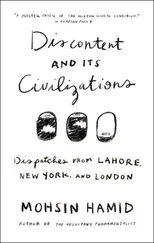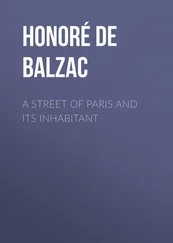Henry Edwards - Old and New Paris - Its History, Its People, and Its Places, v. 1
Здесь есть возможность читать онлайн «Henry Edwards - Old and New Paris - Its History, Its People, and Its Places, v. 1» — ознакомительный отрывок электронной книги совершенно бесплатно, а после прочтения отрывка купить полную версию. В некоторых случаях можно слушать аудио, скачать через торрент в формате fb2 и присутствует краткое содержание. Жанр: foreign_antique, foreign_prose, Путешествия и география, на английском языке. Описание произведения, (предисловие) а так же отзывы посетителей доступны на портале библиотеки ЛибКат.
- Название:Old and New Paris: Its History, Its People, and Its Places, v. 1
- Автор:
- Жанр:
- Год:неизвестен
- ISBN:нет данных
- Рейтинг книги:4 / 5. Голосов: 1
-
Избранное:Добавить в избранное
- Отзывы:
-
Ваша оценка:
- 80
- 1
- 2
- 3
- 4
- 5
Old and New Paris: Its History, Its People, and Its Places, v. 1: краткое содержание, описание и аннотация
Предлагаем к чтению аннотацию, описание, краткое содержание или предисловие (зависит от того, что написал сам автор книги «Old and New Paris: Its History, Its People, and Its Places, v. 1»). Если вы не нашли необходимую информацию о книге — напишите в комментариях, мы постараемся отыскать её.
Old and New Paris: Its History, Its People, and Its Places, v. 1 — читать онлайн ознакомительный отрывок
Ниже представлен текст книги, разбитый по страницам. Система сохранения места последней прочитанной страницы, позволяет с удобством читать онлайн бесплатно книгу «Old and New Paris: Its History, Its People, and Its Places, v. 1», без необходимости каждый раз заново искать на чём Вы остановились. Поставьте закладку, и сможете в любой момент перейти на страницу, на которой закончили чтение.
Интервал:
Закладка:
Magic was employed not only for self-preservation, but with the most murderous intentions. When it was used to destroy an enemy, his effigy was prepared in wax; and the thrusts and stabs inflicted upon the figure were supposed to be felt by the original. A gentleman named Lamalle, having been executed on the Place de Grève in 1574, and a wax image, made by the magician Cosmo Ruggieri, having been found upon him, Catherine de Medicis, who patronised this charlatan, feared that the wax figure might have been designed against the life of Charles IX., and that Ruggieri would therefore be condemned to death. Lamalle had maintained that the figure was meant to represent the “Great Princess”: Queen Marguerite, that is to say. But Cosmo Ruggieri was condemned, all the same, to the galleys; though his sentence – thanks, no doubt, to the personal influence of Catherine de Medicis – was never executed. Nicholas Pasquier, who gives a long account of Ruggieri in his Public Letters , declares that he died “a very wicked man, an atheist, and a great magician,” adding that he made another wax figure, on which he poured all kinds of venoms and poisons in order to bring about the death of “our great Henry.” But he was unable to attain his end; and the king, “in his sweet clemency, forgave him.”
When, after the Barricades, Henry III. left Paris, the priests of the League erased his name from the prayers of the Church, and framed new prayers for those princes who had become chiefs of the League. They prepared at the same time images of wax, which they placed on many of the altars of Paris, and then celebrated forty masses during forty hours. At each successive mass the priest, uttering certain mystic words, pricked the wax image, until finally, at the fortieth mass, he pierced it to the heart, in order to bring about the death of the king. Thirteen years later, under the reign of Henry IV., the Duke de Biron, who had his head cut off in the Bastille, publicly accused Laffin, his confidant and denunciator, of being in league with the devil, and of possessing wax figures which spoke. Marie de Medicis employed, even whilst in exile, a magician named Fabroni, much hated by Richelieu, for whom Fabroni had predicted a speedy death.
It was in front of Notre Dame that by order of the princes, dukes, peers, and marshals of France, assembled in the Grand Chamber of Parliament, Damiens was condemned to do penance before being tortured and torn to pieces. He was to be tormented, by methods no matter how barbarous, until he revealed his accomplices, and was also required to make the amende honorable before the principal door of Notre Dame. Thither, in his shirt, he was conveyed on a sledge, with a lighted wax candle in his hand weighing two pounds; and there he went down on his knees, and confessed that “wickedly and traitorously he had perpetrated the most detestable act of wounding the king in the right side with the stab of a knife”; that he repented of the deed, and asked pardon for it of God, of the king, and of justice. After this he was to be carried on the sledge to the Place de Grève, where, on the scaffold, he was to undergo a variety of tortures, copied from those appointed for the punishment of Ravaillac. Finally, his goods were to be confiscated, the house where he was born pulled down, and his name stigmatised as infamous, and for ever forbidden thenceforth, under the severest penalties, to be borne by any French subject.
Damiens had been educated far above his rank. His moral character, however, was peculiarly bad. His life had been one perpetual oscillation between debauchery and fanaticism. His changeableness of disposition was noticed during his imprisonment at Versailles. Sometimes he seemed thoroughly composed, as though he had suffered nothing and had nothing to suffer; at other times he burst into sudden and vehement passions, and attempted to kill himself against the walls of his dungeon or with the chains on his feet. As in one of his furious fits he had tried to bite off his tongue, his teeth were all drawn, in accordance with an official order.
When the sentence was read to him, Damiens simply remarked, “La journée sera rude.” Every kind of torture was applied to him to extort confessions. His guards remained at his side night and day, taking note of the cries and exclamations which escaped him in the midst of his sufferings. But Damiens had nothing to confess, and on the 28th of January he was carried, with his flesh lacerated and charred by fire, his bones broken, to the place of execution.
Immediately after his self-accusation in front of Notre Dame he was taken to the Place de Grève, where the hand which had held the knife was burnt with the flames of sulphur. Then he was torn with pincers in the arms and legs, the thighs and the breast, and into his wounds were poured red hot lead and boiling oil, with pitch, wax, and sulphur melted and mixed. The sufferer endured these tortures with surprising energy. He cried out from time to time, “Lord, give me patience and strength.” “But he did not blaspheme,” says Barbier, in his narrative of the scene, “nor mention any names.”
The end of the hideous tragedy was the dismemberment. The four traditional horses were not enough. Two more were added, and still the operation did not advance. Then the executioner, filled with horror, went to the neighbouring Hôtel de Ville to ask permission to use “the axe at the joints.” He was, according to Barbier, sharply rebuked by the king’s attendants, though in an account of the tragedy contributed at the time to the Gentleman’s Magazine (and derived from the gazettes published in Holland, where there was no censorship), the executioner was blamed for having delayed the employment of the axe so long.
There are conflicting accounts, too, as to the burning of the prisoner’s calves. It was said on the one hand that the garde des sceaux , Machault, caused red hot pincers to be applied in his presence to Damiens’ legs at the preliminary examination; but another version declares this to be a mistake, and ascribes the burning of his legs to the king’s attendants, who, seeing their master stabbed, are represented as punishing the assassin by the unlikely method of applying torches to his calves.
The torture of Damiens lasted many hours, and it was not till midnight, when both his legs and one of his arms had been torn off, that his remaining arm was dragged from the socket. The life of the poor wretch could scarcely have lasted so long as did the execution of the sentence passed upon him. A report of the trial was published by the Registrar of the Parliament; but the original record being destroyed, it is impossible to test the authenticity of this report. It fills four small volumes, and is entitled “Pièces Originales et Procèdures du Procès fait à Robert François Damiens, Paris, 1757.”
Ivan the Terrible, when his digestion was out of order, and he felt unequal to the effort of breakfasting, used to revive his jaded appetite by visiting the prisons and seeing criminals tortured. George Selwyn claimed to have made amends for his want of feeling in attending to see Lord Lovat’s head cut off by going to the undertaker’s to see it sewn on again, when, in presence of the decapitated corpse, he exclaimed with strange humour, and in imitation of the voice and manner of the Lord Chancellor at the trial: – “My Lord Lovat, your lordship may rise.” This dilettante in the sufferings of others is known to have paid a visit to Paris for the express purpose of seeing Damiens torn in pieces. On the day of the execution, according to Mr. Jesse (“George Augustus Selwyn and his contemporaries”), “he mingled with the crowd in a plain undress and bob wig,” when a French nobleman, observing the deep interest he took in the scene, and supposing from the simplicity of his attire that he was a person of the humbler ranks in life, chose to imagine that the stranger must infallibly be an executioner. “Eh, bien, monsieur,” he said, “êtes-vous arrivé pour voir ce spectacle?” “Oui, monsieur.” “Vous êtes bourreau?” “Non, non, monsieur, je n’ai pas cet honneur; je ne suis qu’un amateur.”
Читать дальшеИнтервал:
Закладка:
Похожие книги на «Old and New Paris: Its History, Its People, and Its Places, v. 1»
Представляем Вашему вниманию похожие книги на «Old and New Paris: Its History, Its People, and Its Places, v. 1» списком для выбора. Мы отобрали схожую по названию и смыслу литературу в надежде предоставить читателям больше вариантов отыскать новые, интересные, ещё непрочитанные произведения.
Обсуждение, отзывы о книге «Old and New Paris: Its History, Its People, and Its Places, v. 1» и просто собственные мнения читателей. Оставьте ваши комментарии, напишите, что Вы думаете о произведении, его смысле или главных героях. Укажите что конкретно понравилось, а что нет, и почему Вы так считаете.












